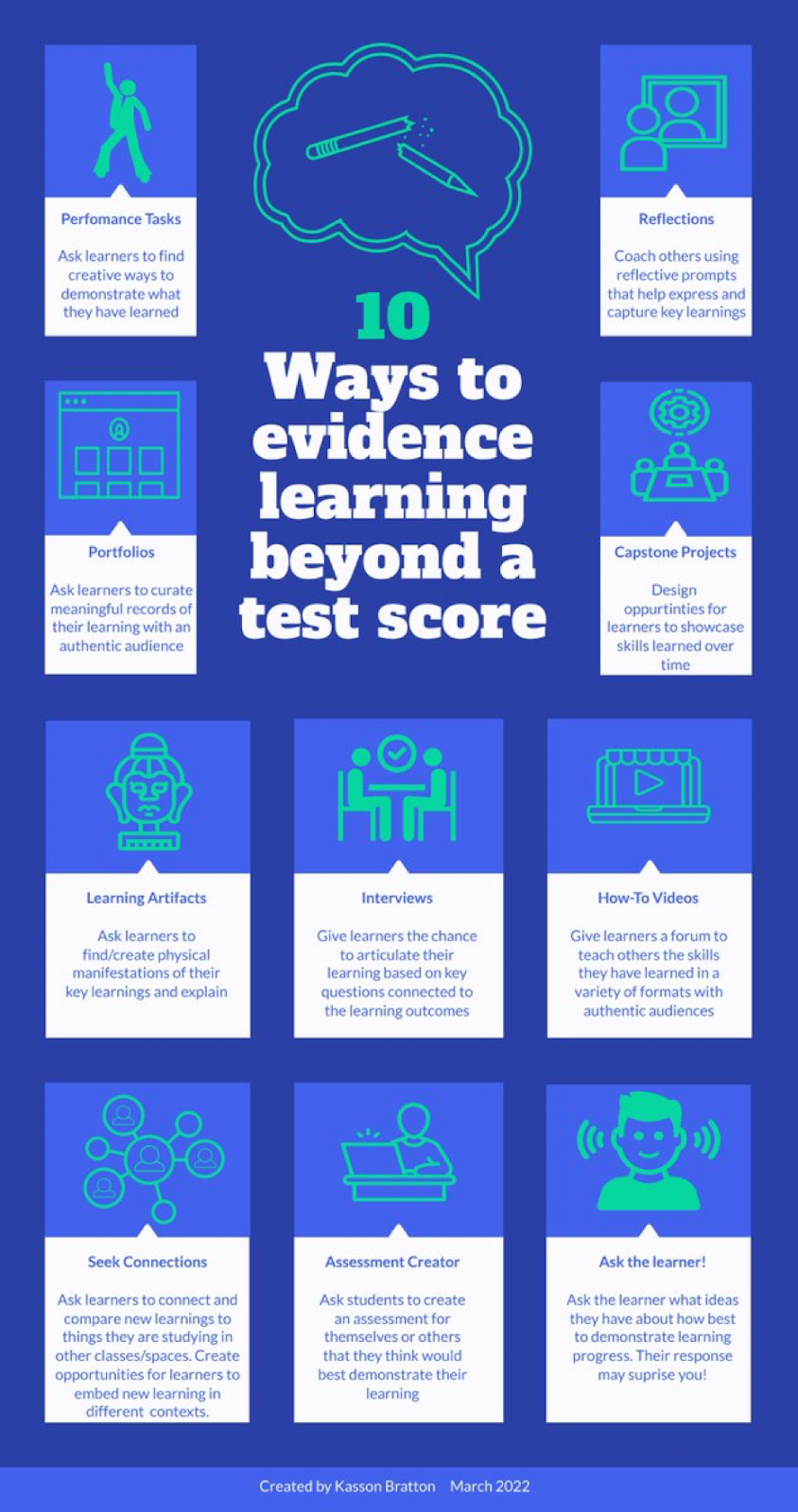Assessments and testing
As the end of March nears and testing season is upon us, I thought I would take advantage of the opportunity to talk about ways to demonstrate student learning beyond tests. Little (if any) research shows that the only way to prepare students for tests is by giving tests, yet this is a default many educators use. I find myself frequently engaged in discussions about this with our teachers.
The questions, I ponder with them: what are we trying to measure? What are the different ways we can measure this? What are the advantages and disadvantages to each approach? Using this graphic as a guide may be helpful in the future. George Couros recently shared it in his weekly e-mail and it provides options that should be considered for all students.
Some of you know, I’m a firm believer in providing students options to best demonstrate their learning but I also believe it’s part of every teachers job to guide students to selecting how they can best demonstrate their learning. The question our secondary teachers need to be asking should not be about how do I best prepare students for (enter test name here)? Examples might include APs or SAT or ACT. Rather we should be asking how do I know if my students learned the enduring concepts of my curriculum and can apply them to their lives in meaningful ways. Scaffolds can help different learners to achieve this goal including embedding in the curriculum opportunities for different types of assessment so students can learn what assessments best allow them to demonstrate their learning of new concepts. Recently I read an article in Edutopia ( https://www.edutopia.org/blog/scaffolding-lessons-six-strategies-rebecca-alber ) about different scaffolds to support learners that was a great reminder of some simple strategies including having students reflect on their learning and conferencing with students about this. After all, it should be a shared goal of all educators to support all students in becoming master learners which means every student must understand how they learn best and how they can best share their learning in ways that are meaningful to them.
While tests, especially standardized tests are not going away any time soon, and are an important tool for education systems to know how their learners are doing overall in the system. It is critical that educators don’t make this the focus of every assessment in their classroom. The question we need to keep asking is how do we know for this unit if each student met the intended outcomes? If we do this and focus on task/assessment choice and design then our students will be prepared for the world of tomorrow. Isn’t this our shared big picture goal in education?
Comments
Post a Comment